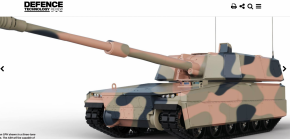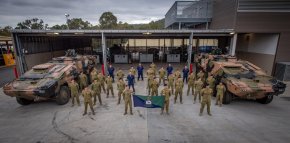The Rheinmetall 30mm gun uses links, while the Mk44S does not. Both have a different muzzle fuze programmer so their munitions are totally incompatible.
Regarding the weapon choice, Phase 3 requirements clearly state that competitors will not be bound in any way by the results of Phase 2, and that the army reserves the right to choose even the winning turret from Phase 3 as a replacement for the Phase 2 turret.
The way LAND 400 was built, it basically guaranteed the winner of Phase 2 wins the jackpot. But to remedy that and avoid charges of corruption, misconduct, whatever, and gain a bad reputation in industry, they took the economical losses to make all phases of the program as competitive as possible.
So, they already decided and acknowledged that from an economical standpoint, it makes no sense, as long as they get the absolute best result in their view.
This also reduces risk for Australia, by the way. If the winner of phase 2 could dictate terms, they could get really screwed in phase 3.





